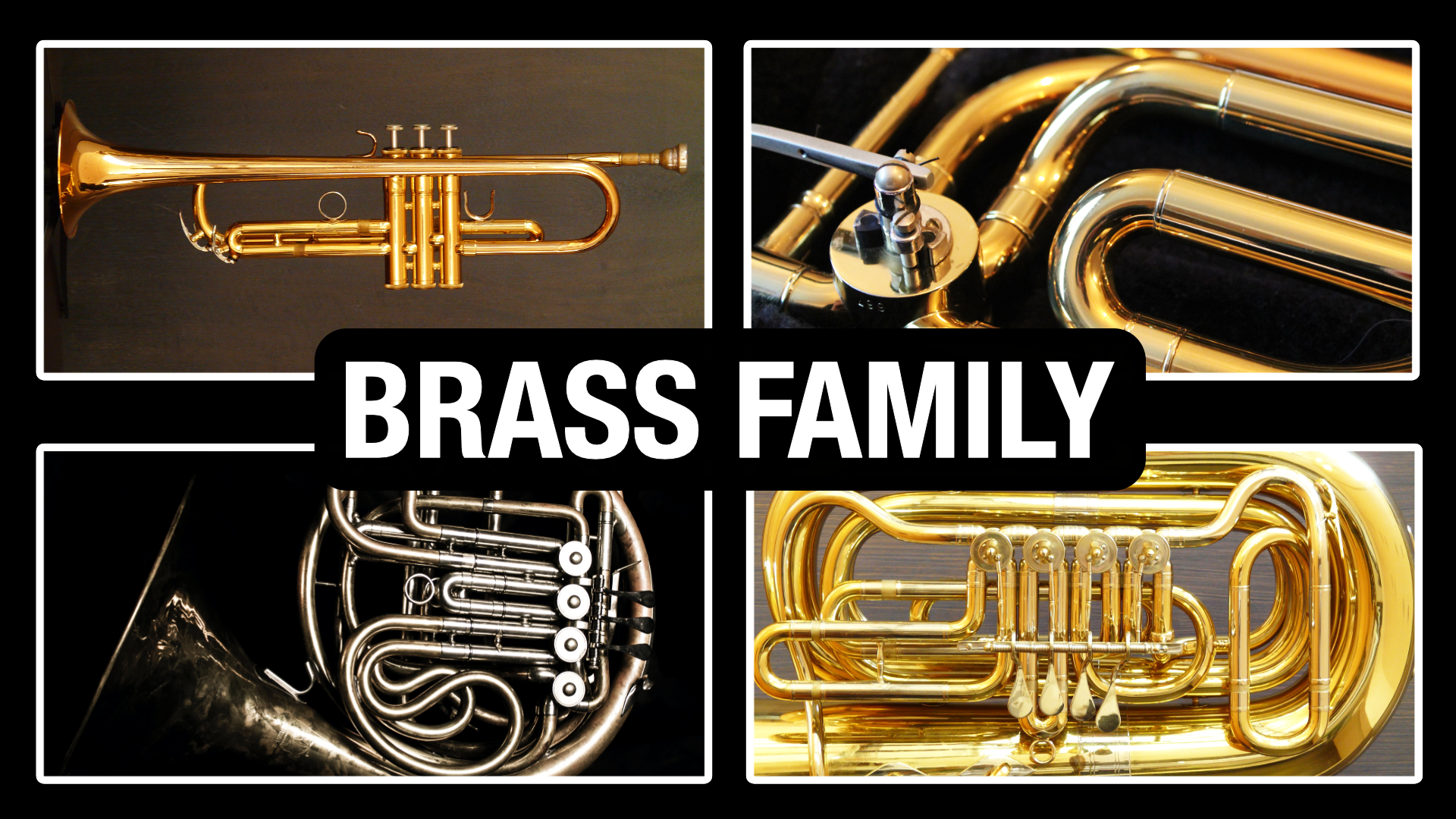 What instruments are in the brass section of the orchestra?
What instruments are in the brass section of the orchestra?
Well, there in fact 4 sub families of brass instruments, that together create the “Brass Section” of a modern orchestra. Let’s explore each brass family in this article.
The Trumpet Family
This is the highest instrument family of the brass section, and not only can they play high, but also extremely loud and piercing. The trumpets easily cut through a mix of an entire orchestra playing.
Even a solo trumpet playing a leading melody will have no problem being heard when playing the louder dynamic range. The trumpets can also perform very beautiful legatos, vibratos, shakes and other expressive articulations.
All of this makes the trumpets amazing for melody writing. Anything from a lonely soft trumpet solo for a sombre vibe, to the sharp, bright majestic fanfare sound of a trumpet section playing together.
Another thing trumpets are great for is rhythmic parts, because they easier to play very fast phrases on compared to the other brass instruments.
This makes them excellent for rhythmic phrases. Anything from ostinato like parts to riff style motifs focusing on shorter note articulations.
As all brass instruments, there are a lot of types and variations of trumpets. Here are the most common trumpets:
- Bb Trumpet (most common)
- C Trumpet
- Piccolo Trumpet
- Flugelhorn
- Cornet
- Bugle
The Horn Family
The horns (also called French Horns) are shaped like a weird circle in order to extend the tubing. The bell is also very large, with a bore (tube diameter) that is increases over the length of the tube.
This makes the horns sound very deep, rich and warm in tone. With excellent dynamic range, and range of tone color.
In lower piano dynamics the horns have a noble majestic warm tone, but as the dynamics goes into fortissimo their character opens up to brighter and sharper.
The low to mid range focus of the horns make them superb for rich, deep melodies or melodic harmony writing with an astonishing ability to swell and arc with dynamic crescendos and diminuendos.
As all brass instruments, there are a lot of types and variations of horns. Note that there are also 3 distinct versions of designs for horns: single horns, double horns and triple horns. Here are the most common horns:
- F Horn
- Bb Horn
The Trombone Family
The trombones stand out in the brass section due to their long slide mechanism, which in fact make them incredible for long portamentos and glissandos.
The trombone family starts at the very low range with contrabass trombones, which can go even lower than the double basses in the string section.
But the most common “standard” trombone sits at about the same range as the standard french horns. However, while the french horns shines the most for beautiful melody lines, the trombones are often used for harmony writing, rhythmic phrases, and generally filling out the orchestra with more power and depth.
Having trombone lines written in harmony is therefore very common, and then having them swell and arc with the dynamics to create a rich harmonic texture to the composition that sits very well in combination with the string harmonies.
As all brass instruments, there are a lot of types and variations of trombones. Here are the most common:
- Contrabass Trombone
- Bass Trombone
- Tenor Trombone (Bb)
- Alto Trombone (Eb)
The Tuba Family
The biggest, lowest and deepest instrument of the brass section is the tuba family. They provide the bassline of the orchestra, often in combination with the double basses in the string section.
They tend to write slower parts and longer notes, or marcatos and accents for adding power. When used for staccato writing, the tubas have become the go to for “comedic writing” in orchestral music. Especially combined with funny sliding notes on the trombones.
But for the most part they provide a sense of power in the bass range of orchestral music.
As all brass instruments, there are a lot of types and variations of tubas. Here are the most common:
- Bb Tuba (most common)
- C Tuba
- Eb Tuba
- F Tuba
- Euphonium
- Cimbasso
